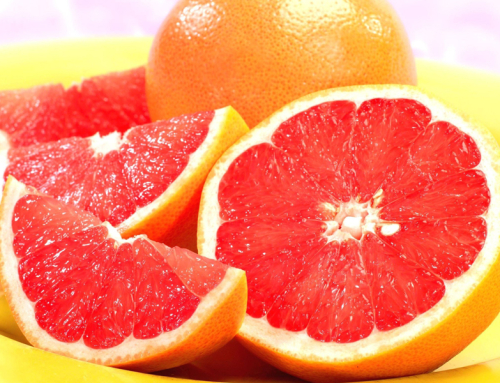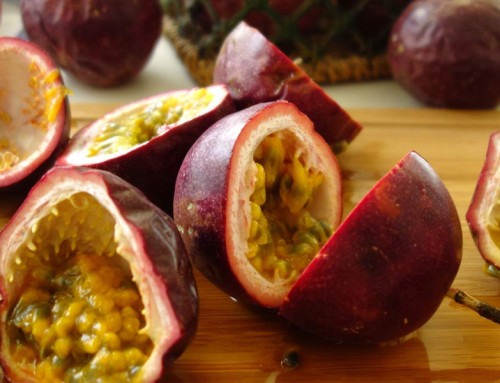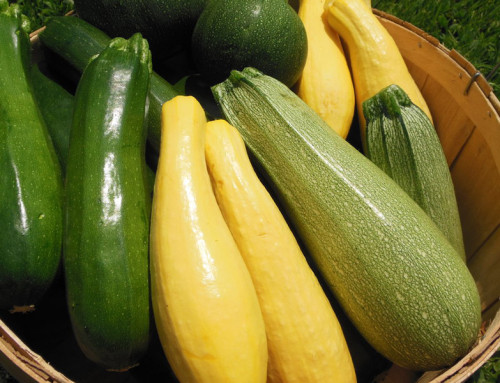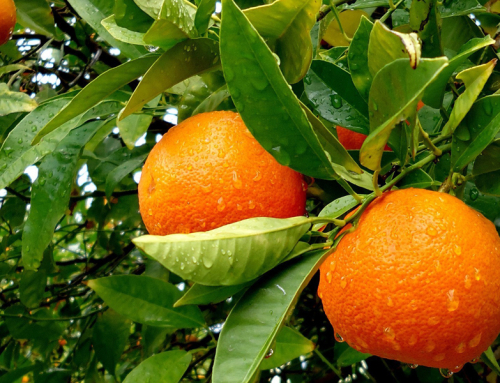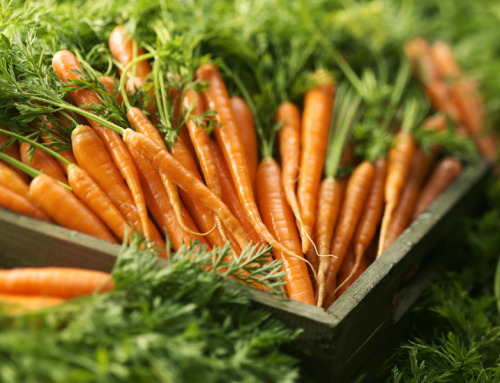A single watermelon with a 7.5-inch diameter contains approximately 1,355 calories, according to the U.S. Department of Agriculture’s National Nutrient Database. However, that assumes that the watermelon is a round sphere, while most are elongated ovoids. So, it’s best to measure by some other means, since few people will eat an entire watermelon in one sitting. I hope.
- One watermelon wedge (size not specified) = 86 calories
- 1 cup of melon balls = 46 calories
- 1.25 lbs = 90 calories
- 100 grams = 30 calories
- 100 grams seeds = 557 calories
- 1-inch cube of rind = 1.8 calories
Watermelon is generally not cooked, nor dehydrated.
Watermelon is an excellent source of energy because it contains 6 g of sugar per cup and is one of the sweetest fruits you can eat. The bulk of this fruit’s calories come from carbohydrates in the form of natural sugars. including fructose, glucose and sucrose. Fructose and glucose are simple sugars that are rapidly absorbed by your bloodstream to provide instant energy, and sucrose is also an energy source.
- Watermelon has not been proven to directly prevent weight gain, but because it has an extremely low calorie to nutrient ratio, this makes it an ideal addition to a weight loss program.
- Watermelon contains 17% of the recommended daily value of vitamin A (1,627 IU) and 21% of the recommended daily value of vitamin C (23 mg).
- Watermelon is rich in the B vitamins considered essential for energy production, including B1 and B6 and folate.
- Additional nutrients in watermelon include potassium, calcium, phosphorus, magnesium and beta-carotene.
- Watermelon also contains more than half a gram of fiber, but the best fiber source is in the seeds.
- Pink watermelon contains large amounts of the carotenoid antioxidant, lycopene which a proven track record of fighting a variety of cancers, including prostate cancer, breast cancer, lung cancer and colorectal cancer.
- Watermelon may prevent artery clogging plaque that can lead to heart disease, heart attacks and stroke. Mice fed watermelon juice showed lower fat accumulation compared to those fed only water.
- Watermelon is a great source of lutein, which is known to strengthen and protect the eyes from age related disease such as macular degeneration.
- Watermelon is a good source of lycopene, containing 6,889 mg per cup and it is this compound that gives watermelon its color. There is no recommended daily intake minimum in existence yet, but the Mayo Clinic suggests an acceptable range would be from 2 to 30 mg. Lycopene acts as an antioxidant that can stop free radical damage that may trigger cells to mutate into cancer cells. Evidence is inconclusive but the lycopene in watermelon may slow cancer progress or even prevent it.
First, let’s peel back the nutritional information about the watermelon rind, or skin, of the fruit.
Most people discard this hard green rind of a juicy watermelon, but don’t be so hasty! That watermelon rind has many benefits. Whether you eat the rind or use it topically, this oft-wasted food can do good things for your body. Finding a use for it also helps cut down on the amount of garbage you produce, as well as the fly population, so it’s good for the environment as well.
Tart, homemade, watermelon pickles are primarily a Southern delicacy that can stretch your food budget and offer an inexpensive alternative to store-bought pickles. It also makes good relishes or jam. Cut the rind into spears or chunks, or even shred it for recipes. The crunch and texture mimics pickles that are made from cucumbers, and you get your dollar’s worth out of the whole fruit.
The rind isn’t as juicy as the flesh but it is low in calories. A 1-inch cube of watermelon rind contains 1.8 calories. The majority of the calories come from carbohydrates, with 0.32 g per serving. One serving provides 2 % of the daily recommended amount of vitamin C and 1 % of the vitamin B-6. This makes watermelon rind good for your skin, immune system and nervous system.
Watermelon rind contains more citrulline (an antioxidant) than the fruit itself does. Citrulline has wide range of medicinal benefits, including the ability to relax blood vessels. Antioxidants protect you from free-radical damage. Citrulline converts to arginine, which is an amino acid that is vital to the heart, circulatory system and immune system. Arginine increases nitric oxide which mimics the drugs that are used to treat erectile dysfunction.
Eating watermelon rind may help prevent acne breakouts, but you can also rub the rind on your acne as a way of naturally clearing up your face or other areas affected.
What? You want me to eat my watermelon seeds, too?
Yes! Don’t painstakingly pick out the seeds before eating a watermelon, and don’t spit out the seeds if you’re one of the lazy folks. Chew them up and swallow them! And, all jokes aside, no, they won’t make you pregnant or pile up in your appendix or grow in your stomach.
However, take note of the caloric and protein wallop they will give you if eat a lot of them!
Dry watermelon seeds: 100 grams (just under a cup) will set you back 557 calories, 10g saturated fat , 99 mg sodium, 15 carbohydrates, and an awesome 28 grams of protein, 40% iron, 5% calcium, and 47 grams of total fat.
By contrast, the watermelon fruit we all know and love, in that same 100 grams, you get only 30 calories, 0 fat, 1 mg sodium, 8 g carbohydrates, 1g protein. Sounds like those little seeds are much larger, nutritionally, than that giant fruit, eh?
However, you must chew the watermelon seeds for them to be useful. Simply swallowing the seeds will not offer you the same nutritional benefits of the goodness listed below.
- A 100-gram serving of dried watermelon seeds provides 10mg (70% DV) of zinc, 11mg (74 %DV) per cup, and 3 mg (19% DV) per ounce and are one of the highest sources of zinc which is a mineral required daily for our bodies. A zinc deficiency may give you hair loss, diarrhea and an impaired immune system. Adults should consume about 15 mg of zinc per day.
- Watermelon seeds contain 2 g of iron per 1 ounce serving. Iron deficiency can result in anemia, which leaves you feeling weak and fatigued so it’s important to consume enough iron (8 mg) on a daily basis via many sources, including watermelon seeds.
- Watermelon seeds contain several types of amino acids, including those referred to as essential and non-essential.
- Watermelon seeds are about 35% protein. However, an ounce of dried watermelon seeds contain 158 calories and 13 grams of fat which means they are a high-fat source of protein because watermelon seeds are also made up of oil.
- In addition to watermelon oil and protein, the other major component of the seed is dietary fiber, to help maintain a healthy digestive tract. However, this part of the seed is not digestible, so it simply adds bulk, which helps stool to pass more easily through your intestines.
An Important Word about Glycemic Index
The glycemic index is a measure of how food affects blood sugar and insulin levels over time. High glycemic foods make blood sugar rise quickly which leads to an increase in the secretion of the hormone, insulin, from the pancreas to redistribute blood sugar to your cells, tissues and muscles. Low glycemic index foods keep blood sugar levels in a more stable state.
A glycemic index between 50 to 70 is moderate while 70 to 100 is high. Watermelon’s GI index is between 72 to 80, which is borderline high and this will have a significant effect on insulin release from the pancreas. This may cause a mildly low blood sugar drop a few hours later after consumption.
This high glycemic index means that the best time to eat watermelon is before exercising. Eating a small snack one hour before exertion is necessary to have the most effective workout by raising available blood sugar levels, One half cup or even one cup of watermelon is a good choice for a small pre-exercise snack glucose is released into the bloodstream immediately after consuming it and muscles will have a lot of available energy for a good workout.
DIABETES WARNING: A person with diabetes should not eat more than 1.25 cups of watermelon per day because of its high glycemic index which can quickly cause a rise in blood sugar that will lead to a higher baseline blood sugar that is difficult for a diabetic patient to control. Poorly controlled blood sugars can lead to serious and life-threatening complications. However, watermelon has a low glycemic LOAD which may be a better measure of a food’s effect on blood sugar. This is because a watermelon is over 90% water, and water is calorie-free, yet filling. Research is still on-going.
ALLERGY WARNING: You may experience an allergy to watermelon if you are sensitive to latex, celery, cucumber or carrots, as these are all related. The allergens in watermelon are malate dehydrogenase and triose phosphate isomerase. Symptoms may be mild or severe, including hives, swelling of the face, diarrhea or anaphylaxis.


